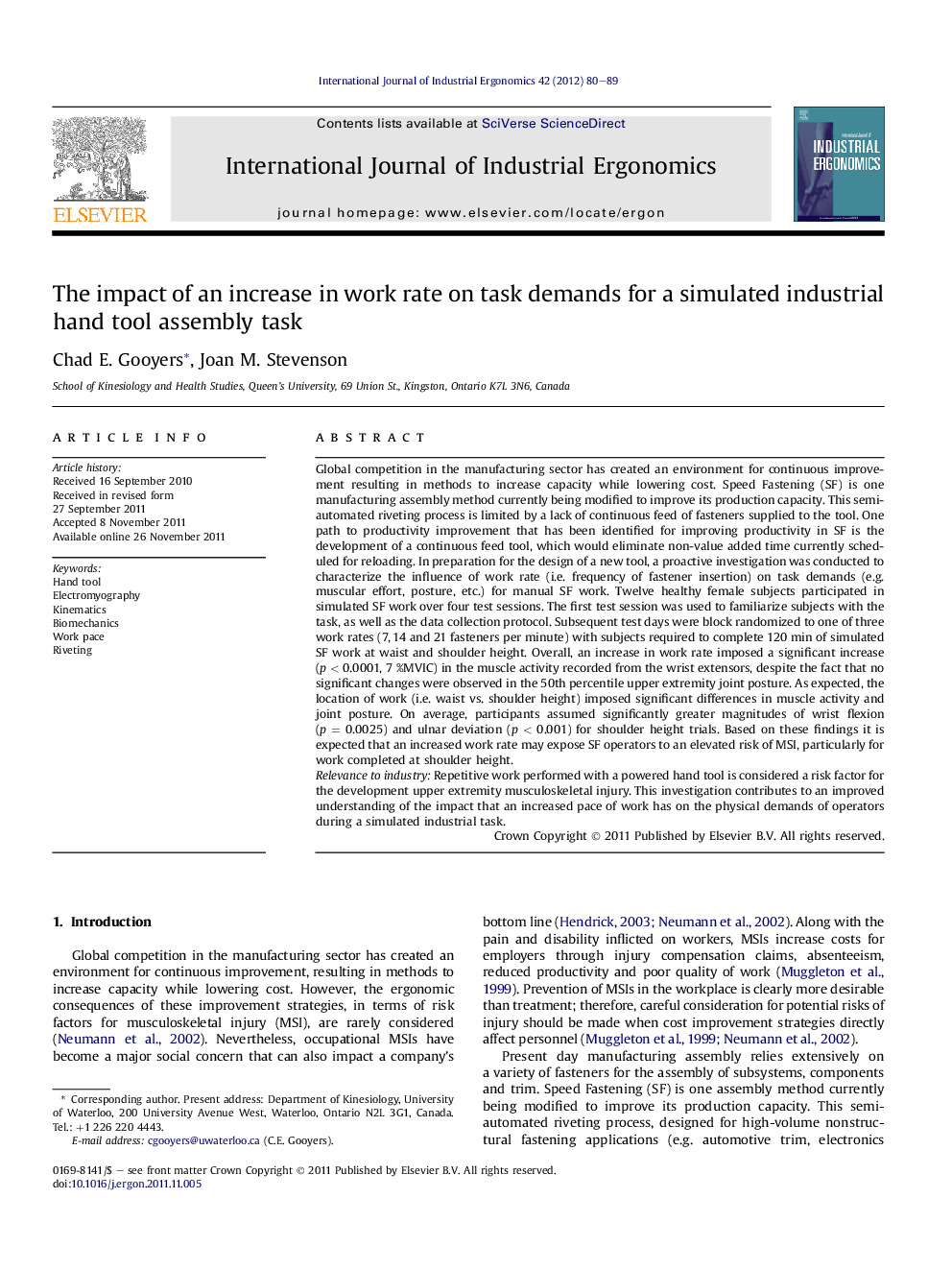| کد مقاله | کد نشریه | سال انتشار | مقاله انگلیسی | نسخه تمام متن |
|---|---|---|---|---|
| 1096195 | 1487448 | 2012 | 10 صفحه PDF | دانلود رایگان |

Global competition in the manufacturing sector has created an environment for continuous improvement resulting in methods to increase capacity while lowering cost. Speed Fastening (SF) is one manufacturing assembly method currently being modified to improve its production capacity. This semi-automated riveting process is limited by a lack of continuous feed of fasteners supplied to the tool. One path to productivity improvement that has been identified for improving productivity in SF is the development of a continuous feed tool, which would eliminate non-value added time currently scheduled for reloading. In preparation for the design of a new tool, a proactive investigation was conducted to characterize the influence of work rate (i.e. frequency of fastener insertion) on task demands (e.g. muscular effort, posture, etc.) for manual SF work. Twelve healthy female subjects participated in simulated SF work over four test sessions. The first test session was used to familiarize subjects with the task, as well as the data collection protocol. Subsequent test days were block randomized to one of three work rates (7, 14 and 21 fasteners per minute) with subjects required to complete 120 min of simulated SF work at waist and shoulder height. Overall, an increase in work rate imposed a significant increase (p < 0.0001, 7 %MVIC) in the muscle activity recorded from the wrist extensors, despite the fact that no significant changes were observed in the 50th percentile upper extremity joint posture. As expected, the location of work (i.e. waist vs. shoulder height) imposed significant differences in muscle activity and joint posture. On average, participants assumed significantly greater magnitudes of wrist flexion (p = 0.0025) and ulnar deviation (p < 0.001) for shoulder height trials. Based on these findings it is expected that an increased work rate may expose SF operators to an elevated risk of MSI, particularly for work completed at shoulder height.Relevance to industryRepetitive work performed with a powered hand tool is considered a risk factor for the development upper extremity musculoskeletal injury. This investigation contributes to an improved understanding of the impact that an increased pace of work has on the physical demands of operators during a simulated industrial task.
► An increase in work rate imposed a notable increase in 50th percentile wrist extensor muscle activity.
► Integrated muscle activity recorded from the wrist extensors and biceps was impacted by work rate.
► Work rate had minimal impact on 50th percentile upper extremity joint posture.
Journal: International Journal of Industrial Ergonomics - Volume 42, Issue 1, January 2012, Pages 80–89